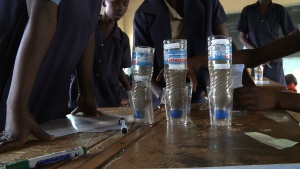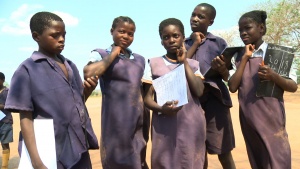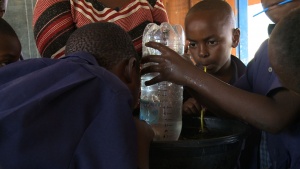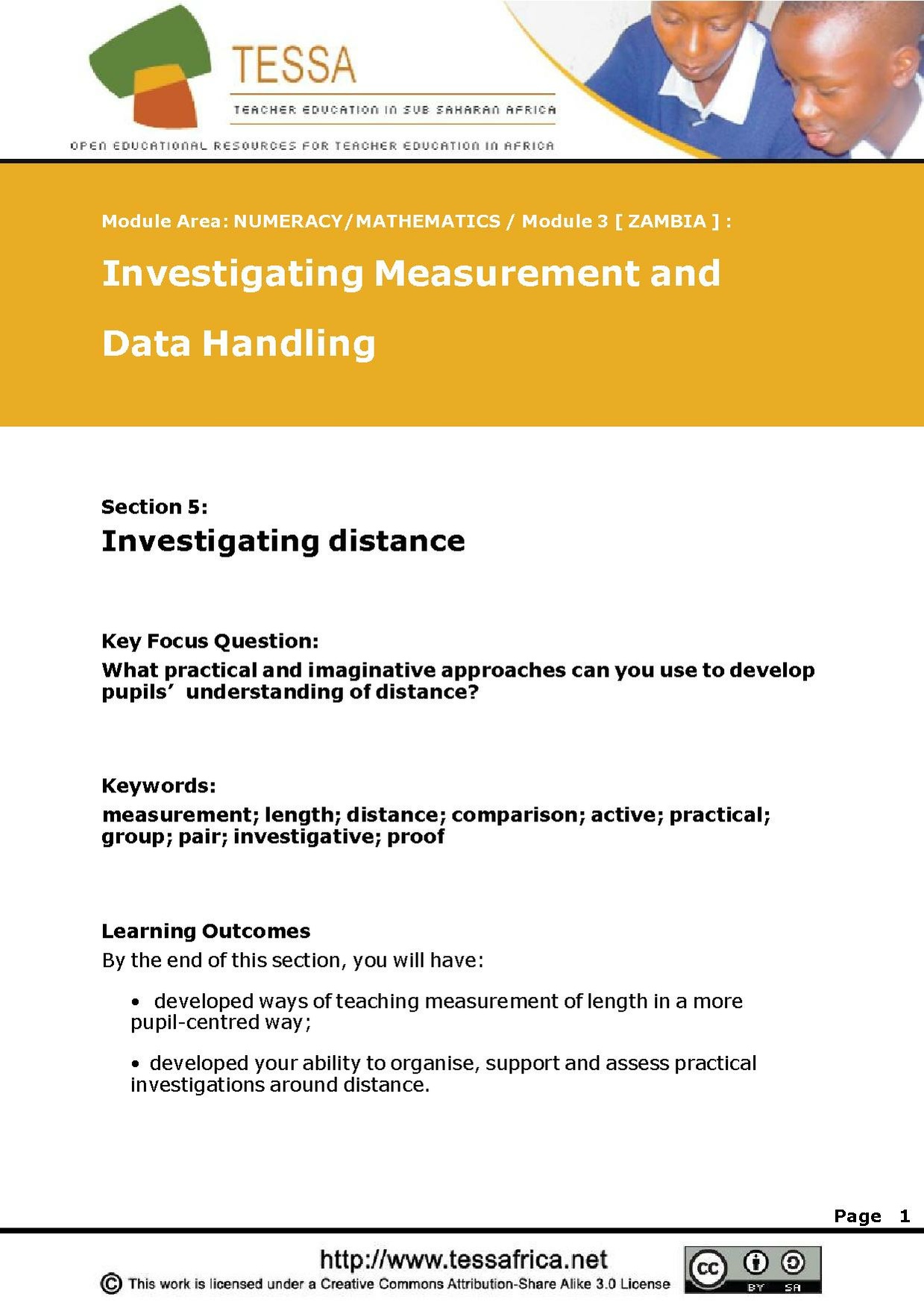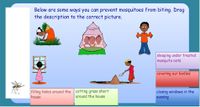Induction session 8.7 - AVU workshop November 2014
<translate>
Additional resources for this session
Videos and slides . </translate>
<translate>
Making use of Enquiry Ideas
![]() Same-task group work (10 min) on making use of enquiry ideas Below are five enquiry ideas (A-E) that could be turned into an enquiry in your class. Please note that these are just enquiry ideas which means that you need to go through substantial thinking and planning for the ideas to be introduced in a lesson to engage students in their own enquiry. It may be that you do not find some of the ideas useful at all, in which case you are welcome to come up with your own enquiry ideas to discuss as a group.
Same-task group work (10 min) on making use of enquiry ideas Below are five enquiry ideas (A-E) that could be turned into an enquiry in your class. Please note that these are just enquiry ideas which means that you need to go through substantial thinking and planning for the ideas to be introduced in a lesson to engage students in their own enquiry. It may be that you do not find some of the ideas useful at all, in which case you are welcome to come up with your own enquiry ideas to discuss as a group.
Divide yourself into groups of three or four teachers. You should read through all the enquiry ideas and eventually pick one or two ideas for the group activity that you will be working on together in this session and in the next two weeks. As you are reading through these ideas, think about the following:
- Are the ideas interesting and engaging for my students?
- Are the ideas relevant to the curriculum? What subject will it be most relevant to introduce them to?
- What can be an appropriate lesson objective(s) if you do make use of the enquiry ideas?
- What kind of resources will you need and are they easily accessible to you and your students?
- How will you introduce the ideas in the first lesson (recall what are some of the ways to present your questions that you have learnt in the previous session) and how many lessons do you think you will need to complete the enquiry process?
Enquiry Ideas: Investigating my body and how it works
Children are naturally curious about how their bodies work so this is a rich area to draw on for enquiry ideas. A simple and straight forward enquiry into pulse rate and how it varies with exercise requires minimal equipment, just a stopwatch (or a clock with a second hand) and some accurate counting. Students can come up with different types of exercise such as running on the spot/sprinting/going up and down stairs and see how these affect their pulse rate. They could also look at whether or not their pulse rate is different when they are lying down.
Here is a short video of a Zambian teacher working on an enquiry topic centred around how our bodies work: investigating lung capacity.
VIDEO
Aggie and class explore lung capacity with a hands-on demonstration using a water bottle
Aggie and her class explore lung capacity and how it varies with height/sex/pulse rate/chest circumference.
Video/Aggie lung capacity.m4v, https://oer.opendeved.net/wiki/Video/Aggie_lung_capacity.m4v,This video is available on your memory stick in the video/Aggie Fitness folder. Duration: 1:47 watch on YouTube, local play / download options / download from dropbox) (Video filmed in 2012, at CBS.)(Series: Aggie Fitness, episode 01)
As well as providing an additional context for enquiry work, this substantial TESSA resource Investigating Distance will help you to develop ways of teaching in a more pupil-centred way and contains useful ideas on how to improve your ability to organise, support and assess practical investigations.
Reading through the case studies will be useful when you are developing your own enquiry ideas, especially case study 3 which emphasises the importance of assessing students' prior understanding and ensuring that they have the necessary skills before embarking on an independent enquiry.
For more ideas, see Starting the enquiry based learning process.
Creating a supportive environment for learning
Introducing cumulative talk - creating a story together
![]() Cumulative talk (10 min): Creating a story together. All the participants get up to rearrange the seating. Arrange the group in a horseshoe seating arrangement(a) if there is room. If not, choose another arrangement allowing participants to see each other. Facilitator starts a story by saying one sentence. All participants then contribute to the story by adding sentences.
Cumulative talk (10 min): Creating a story together. All the participants get up to rearrange the seating. Arrange the group in a horseshoe seating arrangement(a) if there is room. If not, choose another arrangement allowing participants to see each other. Facilitator starts a story by saying one sentence. All participants then contribute to the story by adding sentences.
A good story would:
- be contextually appropriate: for example, use common names of characters and a setting familiar to participants
- have a theme relevant for participants such as education (girl-child receiving schooling later supports family), importance of forests and wildlife (saving a snake later becomes useful for the invention of new medicine), treatment of diseases (steps taken by a family to treat an ill person) etc.
- be short and have few characters, and
- have a problem which is collectively resolved in the end
For instance, you could create a story about welcoming a new child to the school, perhaps a child with an impairment of some kind. The facilitator starts by saying: "The other day, I heard my neighbours talking about whether their child should be starting school, because their child has difficulty walking, and they were not sure whether children like that should go to school." (Relates to Index for Inclusion, A1.1 Everyone is welcomed.)
The activity we just did is an example of “cumulative talk”, where participants build on what the previous person has said (“cumulative talk” is one way of moving towards whole class dialogue – which involves more reasoning and argumentation).
Introduction to the lesson (for context)
![]() Observing, thinking, reflecting (10 min): Video on classification of vertebrates.
In the ongoing OER4Schools sessions, the teachers would already be familiar with Eness' lesson. However, just to introduce Eness' lesson, let's watch these two videos:
Observing, thinking, reflecting (10 min): Video on classification of vertebrates.
In the ongoing OER4Schools sessions, the teachers would already be familiar with Eness' lesson. However, just to introduce Eness' lesson, let's watch these two videos:
VIDEO
Teacher repeats and clarifies
Teacher repeats and clarifies instructions; she illustrates them with nonsense classifications so students do not copy hers
Video/Eness vertebrates 4.mp4, https://oer.opendeved.net/wiki/Video/Eness_vertebrates_4.mp4,This video is available on your memory stick in the video/Eness Vertebrates folder. Duration: 2:43 watch on YouTube, local play / download options / download from dropbox)(Series: Eness Vertebrates, episode 04)(Transcript available here or via YouTube captions.)
VIDEO
Teacher gives detailed help
Teacher gives detailed help to group: shows ICT use. ("I've never seen a Zebra.")
Video/Eness vertebrates 5.mp4, https://oer.opendeved.net/wiki/Video/Eness_vertebrates_5.mp4,This video is available on your memory stick in the video/Eness Vertebrates folder. Duration: 4:04 watch on YouTube, local play / download options / download from dropbox)(Series: Eness Vertebrates, episode 05)
Whole class discussion: Creating a supportive environment
![]() Observing, thinking, reflecting (10 min): Video on classification of vertebrates. Video clips Eness vertebrates 10 ("Is a boy a mammal?") and 11 ("Is a whale a fish or a mammal?"); lively class discussion about classifying these animals, deliberately chosen to create controversy and to challenge the pupils
Observing, thinking, reflecting (10 min): Video on classification of vertebrates. Video clips Eness vertebrates 10 ("Is a boy a mammal?") and 11 ("Is a whale a fish or a mammal?"); lively class discussion about classifying these animals, deliberately chosen to create controversy and to challenge the pupils
VIDEO
Is a boy a mammal?
Eness leads a discussion on 'Is a boy a mammal?'
Video/19 Eness 3 vertebrates 10.mp4, https://oer.opendeved.net/wiki/Video/19_Eness_3_vertebrates_10.mp4,This video is available on your memory stick in the video/Eness Vertebrates folder. Duration: 3:51 watch on YouTube, local play / download options / download from dropbox)(Series: Eness Vertebrates, episode 10)
VIDEO
Fish or mammal?
Class explores the question 'Is a whale a fish or a mammal?'
Video/19 Eness 3 vertebrates 11.mp4, https://oer.opendeved.net/wiki/Video/19_Eness_3_vertebrates_11.mp4,This video is available on your memory stick in the video/Eness Vertebrates folder. Duration: 4:31 watch on YouTube, local play / download options / download from dropbox)(Series: Eness Vertebrates, episode 11)
![]() Whole class dialogue (10 min): on the learning environment and classroom management.
Whole class dialogue (10 min): on the learning environment and classroom management.
- Was there a supportive environment for pupil participation and dialogue in this lesson?(Relates to: LfL, 2) If so, how did the teacher achieve this?
- How did she help students to work out whether the boy and the whale were mammals? Did this discussion move their thinking forward?(Relates to: LfL, 1)
- What did you think about teacher control and pupil learning in these video clips? How would a horseshoe seating arrangement have impacted on this?
- How would you manage something similar in your classroom? How would you encourage pupil talk without losing too much control?
Reflection on what we have learned
![]() Whole class dialogue (10 min): Reflecting on what you have learnt. Reflection on what you have learned from this session about:
Whole class dialogue (10 min): Reflecting on what you have learnt. Reflection on what you have learned from this session about:
- Body language for encouraging dialogue
- Cumulative talk
- Encouraging most pupils to talk
- Withholding feedback sometimes to motivate pupils without fear of “wrong” answers: not evaluating pupil responses, just accepting them
- Forming rules for dialogue
- Managing the tension between control and learners’ freedom to contribute
Cumulative talk in the classroom
![]() Same-task group work (10 min): in pairs: Planning cumulative talk in the classroom. Now pair up, and come up with ideas for cumulative talk in the classroom.
Same-task group work (10 min): in pairs: Planning cumulative talk in the classroom. Now pair up, and come up with ideas for cumulative talk in the classroom.
- Consider that when this activity is done in the classroom with pupils, themes should be chosen from the curriculum.
- Also consider that the seating arrangement can be modified according to teachers’ classrooms, such that pupils see each other. Pupils can leave their tables and just move their chairs (or sit outside if the grounds are suitable).
As you are planning this activity, ask youself the following questions:
- Do your students find it easy to talk?
- How can you encourage students to talk?
- Are some students likely to laugh at other students' contributions? How can you create safe environments that enable students to take risks?(Relates to: LfL, 2.4)
You can use the activity template if you like.
Brainstorm
![]() Whole class brainstorm (10 min) on interactive teaching. Consider the following questions:
Whole class brainstorm (10 min) on interactive teaching. Consider the following questions:
- What is interactive teaching?
- What interactive techniques do you know?
- How often have you used such techniques?
Brainstorming in the classroom
![]() Same-task group work (5 min): Discussion in pairs of what brainstorming(a) looks like in the classroom. Now that we have done a brainstorm in the workshop, what does a brainstorm in the classroom look like? Do you think your students would like this activity? How could you make sure that all students get actively involved? Discuss this with your neighbour.
Same-task group work (5 min): Discussion in pairs of what brainstorming(a) looks like in the classroom. Now that we have done a brainstorm in the workshop, what does a brainstorm in the classroom look like? Do you think your students would like this activity? How could you make sure that all students get actively involved? Discuss this with your neighbour.
![]() Whole class dialogue (5 min): Reporting back from the discussion Participants briefly report back from the group work.
Whole class dialogue (5 min): Reporting back from the discussion Participants briefly report back from the group work.
![]() Observing, thinking, reflecting (5 min): Watch video of a brainstorm. Watch the following video clip together. As you watch, think about the following:
Observing, thinking, reflecting (5 min): Watch video of a brainstorm. Watch the following video clip together. As you watch, think about the following:
- What are you noticing?
- At what point(s) in the lesson could this be used?
- What do you think the students are learning from this?
- How are they learning?
- Can brainstorming be used with large classes too, where there isn’t time for everyone to contribute each time? How would you adapt it for this?
- What are the benefits of brainstorming?
- What makes a brainstorm successful?
- What do you think about the teacher's comment "since I want all of you to participate, no hands up, OK"?
VIDEO
A brainstorm naming animals
A brainstorm naming animals. Start of lesson: brainstorm with unique contributions, time to think first, no hands up technique.
Video/Eness vertebrates 1.mp4, https://oer.opendeved.net/wiki/Video/Eness_vertebrates_1.mp4,This video is available on your memory stick in the video/Eness Vertebrates folder. Duration: 2:43 watch on YouTube, local play / download options / download from dropbox)(Series: Eness Vertebrates, episode 01)(Transcript available here or via YouTube captions.)
This clip from a Grade 3 classroom illustrates how the teacher solicits (and records) different students’ views without evaluating them.
![]() Whole class dialogue (15 min): Discussion on the brainstorm video. Let's now discuss this. We asked some questions above, which you should now discuss.
Whole class dialogue (15 min): Discussion on the brainstorm video. Let's now discuss this. We asked some questions above, which you should now discuss.
![]() Observing, thinking, reflecting (5 min): Summary. Summarise, and discuss the proper meaning of what a brainstorm is. You can refer to OER4Schools/activities/brainstorming to find out more.
Observing, thinking, reflecting (5 min): Summary. Summarise, and discuss the proper meaning of what a brainstorm is. You can refer to OER4Schools/activities/brainstorming to find out more.
Giving formative feedback
Read the Science question below and the responses from two students.
|
Lesson Objective: We are learning ways of preventing being infected by malaria. Success Criteria: I will be successful if I can write at least two correct ways of preventing the malaria infection, communicating clearly and in some detail. Question: Imagine you are going to visit someone in an area that is known to be infested with mosquitoes. Describe two ways to avoid being infected by malaria. Sample student’s response: Mary: I will avoid getting bitten by mosquitoes because malaria is very unpleasant. Mulenga: As mosquitoes bite particularly at night, I will make sure I sleep in rooms that have a good mosquito net or wear a long-sleeved shirt. If I can plan in advance, I will visit a doctor to take some preventive medicine. |
![]() Whole class dialogue (5 min): Whole group brainstorm on what feedback to give the students. As a group, brainstorm:
Whole class dialogue (5 min): Whole group brainstorm on what feedback to give the students. As a group, brainstorm:
- What will be my feedback to Mary? Why?
- What will be my feedback to Mulenga? Why?
![]() Role play (5 min) teacher-student feedback in pairs. Break into pairs, assign roles (teacher, Mary/Mulenga), and do a role play for 5 minutes. The person playing the teacher gives the feedback (based on the brainstorm you have just done), and the other participant (playing first Mary and then Mulenga) responds to the teachers comments or keeps a note of how the feedback makes them feel. Then swap roles and role play again.
Role play (5 min) teacher-student feedback in pairs. Break into pairs, assign roles (teacher, Mary/Mulenga), and do a role play for 5 minutes. The person playing the teacher gives the feedback (based on the brainstorm you have just done), and the other participant (playing first Mary and then Mulenga) responds to the teachers comments or keeps a note of how the feedback makes them feel. Then swap roles and role play again.
![]() Whole group dialogue (5 min): Whole group discussion on teacher-student role plays. Come back together as a group. Discuss the role plays. Was is easier to give feedback to Mary or Mulenga? How did you feel when you were receiving feedback? Make a note of any particular points that you could use in the future when giving feedback to students.
Whole group dialogue (5 min): Whole group discussion on teacher-student role plays. Come back together as a group. Discuss the role plays. Was is easier to give feedback to Mary or Mulenga? How did you feel when you were receiving feedback? Make a note of any particular points that you could use in the future when giving feedback to students.
While giving formative feedback (individually or in whole class):
- always begin with what is good about students’ work or which success criteria have been met and appreciate students’ responses
- ask students to reflect on which criteria was/were not met before you tell them.
- ask students what they could do next time/could have done this time to meet the success criteria
- suggest some points on which students could act immediately/in near future
- for high achievers suggest some points that can be achieved beyond the success criteria
This Zedupad resource Fred the Fly learns about Malaria (see link below) is an informative interactive resource with multiple choice questions on malaria prevention and a drag and drop activity at the end that could be used as part of a formative assessment. If you decide to use the resource, remember to plan in advance of the lesson what the success criteria will be and how you are going to provide feedback to the students.
</translate>

